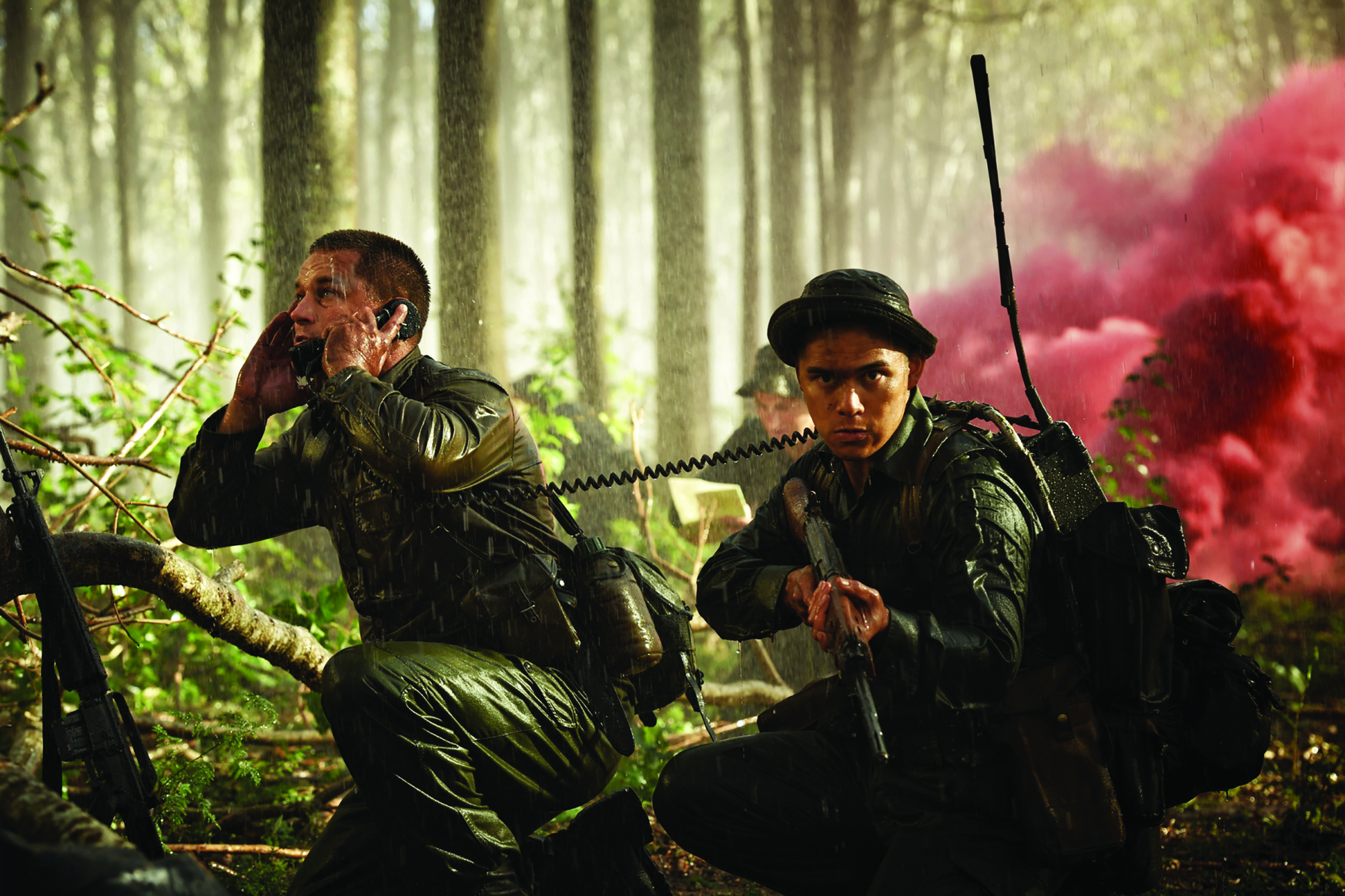Kriv Stenders on Danger Close: The Battle of Long Tan and Revisiting History
A Queensland production over a decade in the making, Danger Close: The Battle of Long Tan (Kriv Stenders, 2019) is a bold yet intimate Anzac war drama that sidesteps politics in favour of saluting Aussie brotherhood and bravery in times of conflict. I speak to Stenders about his experience of working with scribe Stuart Beattie – who previously penned Collateral (Michael Mann, 2004) and Tomorrow, When the War Began (Beattie, 2010) –to do big-screen justice to this curiously overlooked Australian chapter of the Vietnam War.
Oliver Pfeiffer: The Battle of Long Tan is a lesser-known Australian contribution to the Vietnam War. Why was it important, for you, to revisit this particular Anzac story?
Kriv Stenders: Firstly, it’s quite a remarkable story in terms of the actual statistics: 100 men going into a rubber plantation and coming across a North Vietnamese army force of over 2000[1]See ‘The Battle of Long Tan: How 100 Australian Soldiers Held Off 2,000 Viet Cong’, ABC News, 18 August 2016, <https://www.abc.net.au/news/2016-08-18/battle-of-long-tan-explainer-vietnam-war/7710612>, accessed 7 August 2019. […] It [saw] the most artillery ever fired in Australian battle, and the fact that the Australians were, I guess, ‘victorious’ in the battle is pretty unprecedented.
But, more to the point, it’s really a forgotten story – and it’s more about these men, the majority of whom were boys [aged] nineteen and twenty who hadn’t seen combat before. So it’s a story about these men who came back from the war and were shunned, and the Australian Government took over forty years to acknowledge their bravery.[2]See Jennifer Macey, ‘After 42 Years Long Tan Veterans Win Recognition’, The World Today, ABC Local Radio, transcript, 14 August 2008, <https://www.abc.net.au/worldtoday/content/2008/s2335258.htm>, accessed 7 August 2019.
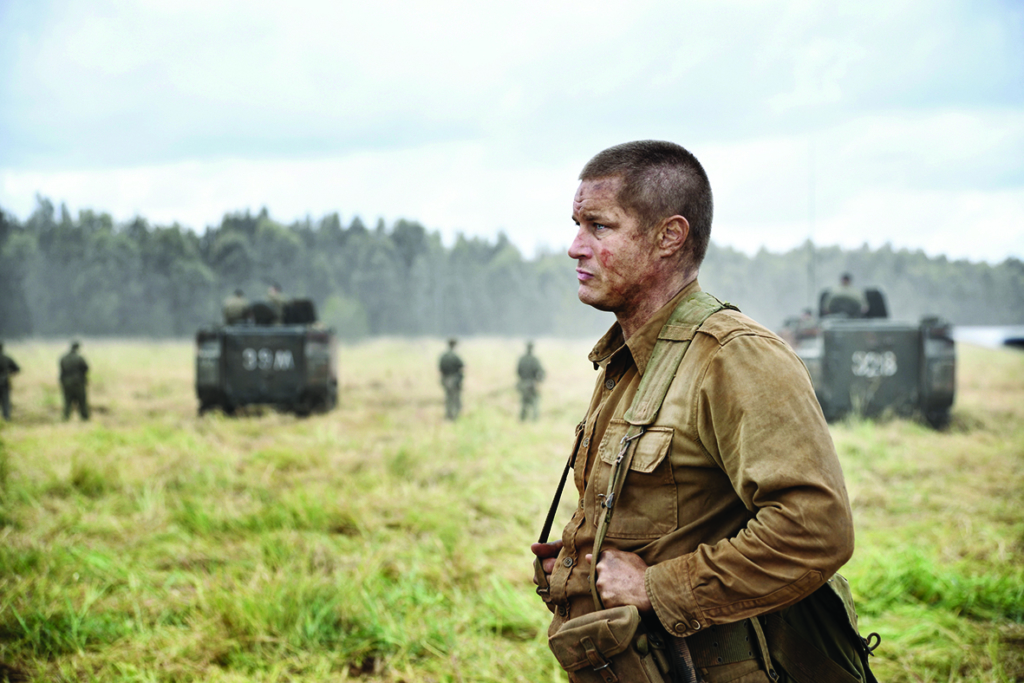
Did you purposely separate the politics surrounding the war from the story told by your film – to focus on the humanity?
Yes, we don’t look into the politics. Clearly, the Vietnam War was an obscene and unjust war. The film is very much the story of these men […] and what I feel it posits is that I don’t think they so much won the battle [as] they survived it. What struck me as incredible is that those four hours [in battle] have basically haunted and scarred these men for the last fifty-three years. So [the film is] very much about that trauma and the incredible odds they were against, and also the incredible bravery, loyalty and brotherhood that were shown on that day.
These men were also conscripts. They were there due to the fact that there was conscription and they were sent to fight this war. Despite that, they still managed to display incredible heroism and bravery.
Obviously, you have to juggle taking some artistic licence with maintaining historical accuracy. Was that difficult to balance, or was it already factored into the script?
The film had taken a long time to develop, and there were various drafts. Stuart had studied the battle when he was at school and always had a dream to make a film about the battle. Fortunately, our paths crossed, so it was this great confluence. That fusion was really when the project came to life because Stuart is a fantastic dramatist and was able to distil what I jokingly call all of the ‘greatest hits of the Battle of Long Tan’: all the defining, iconic elements of the battle, pushed into a very taut, very lean, very tight dramatic structure.
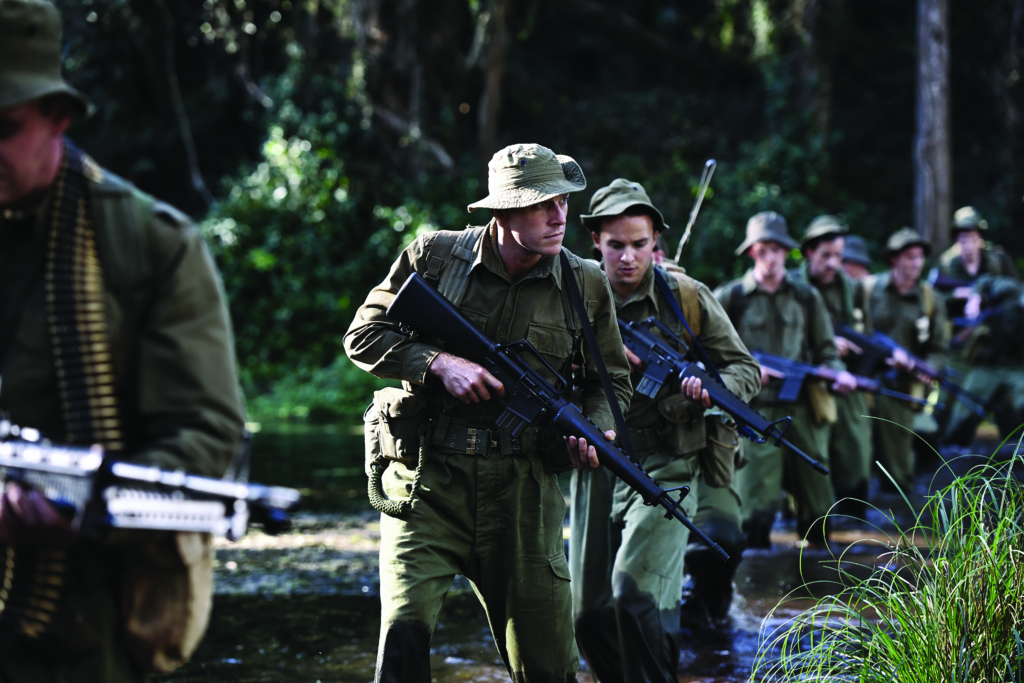
Why did you and the creative team decide to focus on Major Harry Smith (Travis Fimmel)?
There were so many other components to the battle – so many other characters. In fact, the first draft was top-heavy with too many characters. Stuart was really able to home in on Harry. It really was Harry’s story: this man who is a professional soldier, who, at the beginning of the story, feels compromised. He is working with teenagers who he feels are kind of beneath his command. Over the course of the battle, he finds his grace, his humility, and realises he’s trained these men well. He is humbled by this and realises that he’s exactly where he needs to be with his men […] That was the basic story arc we decided on. Stuart was very skilful in being able to create a dramatic arc with that and then create this sort of conflict and tension between [Harry] and Private Paul Large [Daniel Webber].
How much consultation was there with the real-life Harry Smith, to bring authenticity to that portrayal?
There was a certain amount of consultation. One of the producers, Martin Walsh, had already made a feature-length documentary called The Battle of Long Tan [Damien Lay, 2006], and that was really our primary resource, along with a book by Lex McAulay[3]Lex McAulay, The Battle of Long Tan: ‘The Legend of Anzac Upheld’, Arrow Books, London, 1986. and also the book that Harry Smith and the other commanders had written.[4]Notably, Smith wrote the 2015 book Long Tan: The Start of a Lifelong Battle (Big Sky Publishing, Sydney), which was co-authored by Toni McRae. Everything in the film comes from some element of truth, and [these individuals] were consulted more or less [as] we were working off their source material. But there is a certain breakaway point where we had to just kind of move forward and tell the story dramatically and do what we had to do as dramatists to filter in and focus the story.
‘The Vietnam War was an obscene and unjust war. The film is very much the story of these men … those four hours [in battle] have basically haunted and scarred these men for the last fifty-three years.’
—Kriv Stenders
[One] thing that Stuart realised from a very early point was [that] all these men didn’t have an objective overview of the battle because they were geographically pinned to one area. No-one had a global view of the battle [so] no-one had a definitive view of what happened. As storytellers, our role is to fuse it together like a songwriter writes a song or a ballad.
What drew Fimmel to the role of Harry?
He was one of the few actors who really responded to the character. On the page, Harry was quite an enigmatic character and very difficult to lock down; I think a lot of actors looked at [the role] and couldn’t find the entry point […] Travis had this laser-beam insight into that character and had a lot of input into the script at a very late stage. In fact, he worked with Stuart for a week, and Stuart went away and really incorporated a lot of Travis’ ideas. He created more conflicts for Harry so that he’s like a bit of a damaged soul – someone who’s kind of struggling with the ethics of what he’s doing as a soldier.
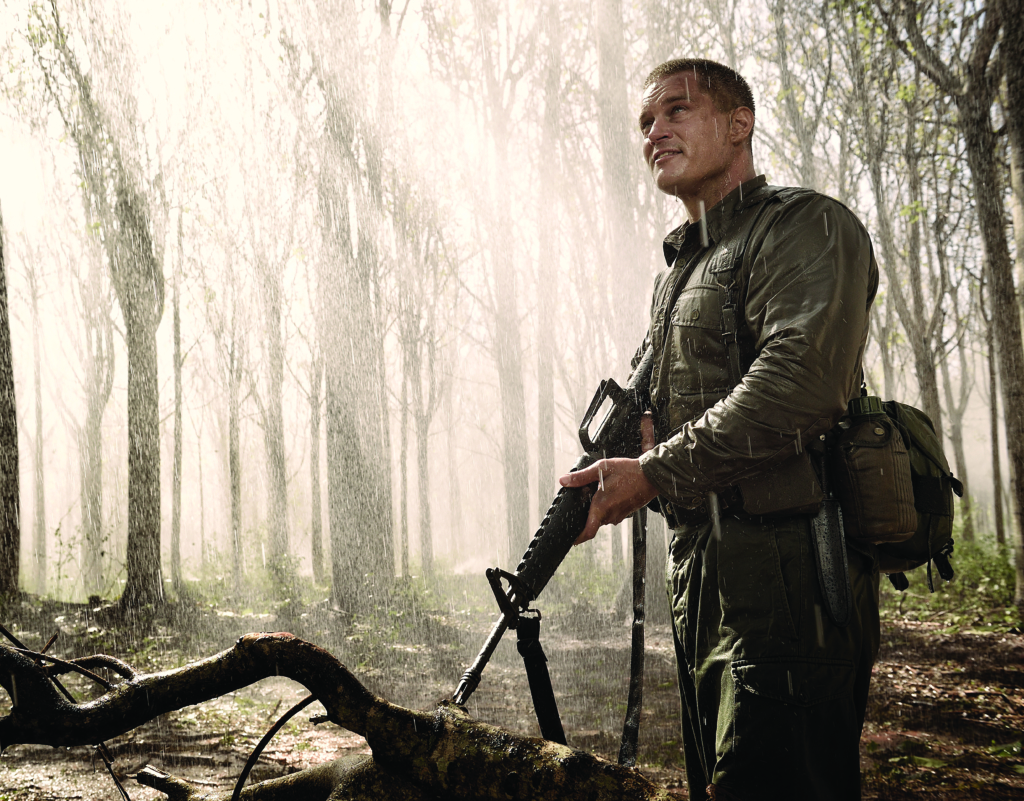
What was it like working with cinematographer Ben Nott, with whom you hadn’t collaborated before and who had primarily shot genre films?
Ben was someone whose work I’d always admired, particularly his work with the Spierig Brothers.[5]Nott worked as cinematographer on the Spierigs’ Daybreakers (2009), Predestination (2014), Jigsaw (2017) and Winchester (2018). We talked about making a film that was very active and very present. We didn’t want to make a classical war movie. We wanted to really make something that was a lot more experiential, a lot more sexual […] Obviously, Apocalypse Now [Francis Ford Coppola, 1979] was a huge touchstone for us. That film has the sexuality of Vietnam and also the horror. It’s both thrilling and horrifying at the same time.
There appears to have been considerable effort put into clearly conveying where characters are, geographically, at any given time.
It was a very complex battle to try and realise [on screen] because we had the company of 100 [soldiers] separated into four platoons of roughly thirty each; therefore, we had to do this with a constant macro–micro sort of triangulation […] to tell the audience what was going on and not confuse them […] We came up with some visual motifs [such as] bird’s-eye views or swoop-ups to give an idea of what was going on. Ben was able to come up with a couple of fantastic practical devices and camera hardware to enable us to do that.
‘We didn’t want to glorify the battle. We didn’t want to make a jingoistic film. We wanted to cut to the bone of the emotion in these young men who were really innocent … That was our thematic compass: to remind the audience that there’s vulnerability here.’
—Kriv Stenders
What would you say are the struggles faced when making Anzac films in Australia?
In general, they’re very difficult films to finance, no matter what country they’re made in, because they’re expensive and there is this market perception that it’s a tough audience to snare. Also, it’s an Australian story and not an American one – so, for us to tell the story properly, we couldn’t make it as a low-budget film. To do justice to the scale of the story, the battle and […] the emotions, we really had to paint this film on a big canvas, and we needed some big elements. We needed the artillery, the location, the [armoured personnel carriers], the gunfire, the choppers […] They were all iconic elements, and we wouldn’t have the movie without those. So there was a lot of pressure, and we spent ten years trying to finance the film. Even up until the week before shooting, we were in a very precarious position because the finance at any moment could collapse.
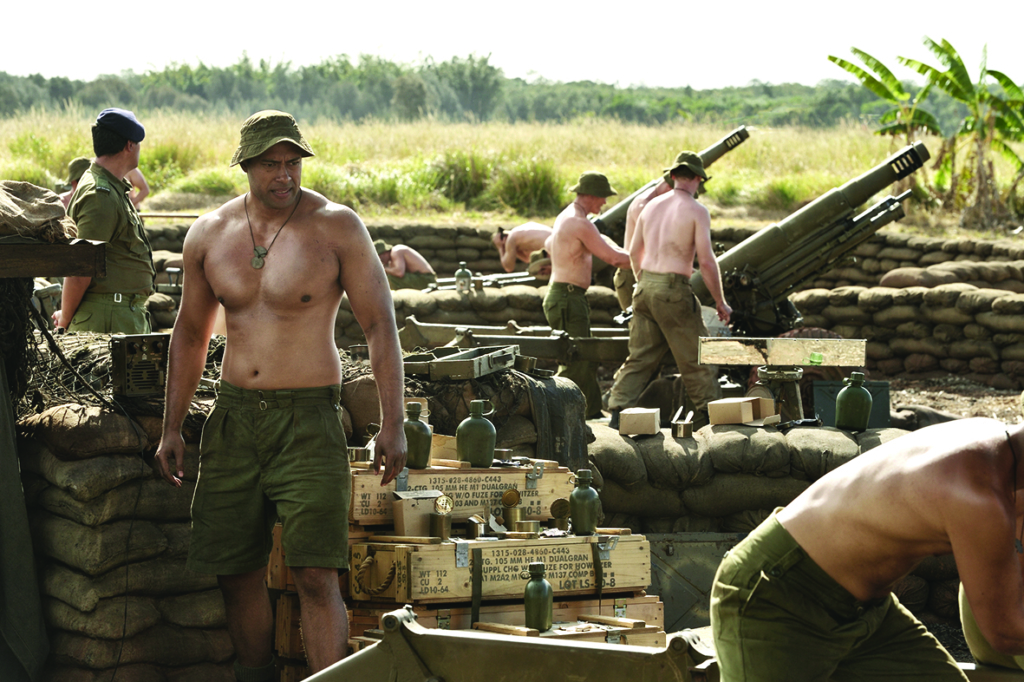
With this genre, you can’t shy away from depicting the brutality and horrors of war to convey what these men had gone through and sacrificed. It’s a necessity, isn’t it?
It is. I remember hearing Coppola talking about Apocalypse Now and how war is unseemly exciting. [His film is] visually really spectacular, so it’s sort of the deal that you make with an audience when you make these kinds of films. You go, ‘Well, yes, it’s obscene; war is wrong; war is one of the worst facets of humanity. But, at the same time, there is this basic adrenaline that you get, and this visual spectacle’ […] So it’s a conundrum, it’s an irony and it’s a conflict.
When I worked with editor Veronika Jenet, we were very conscious of the fact that we didn’t want to glorify the battle. We didn’t want to make a jingoistic film. We wanted to cut to the bone of the emotion in these young men who were really innocent, in a way, and who, as I said, didn’t so much win the battle as survive it. That was our thematic compass: to remind the audience that there’s vulnerability here, and that these young men are on the precipice of death. That’s the reality of war.
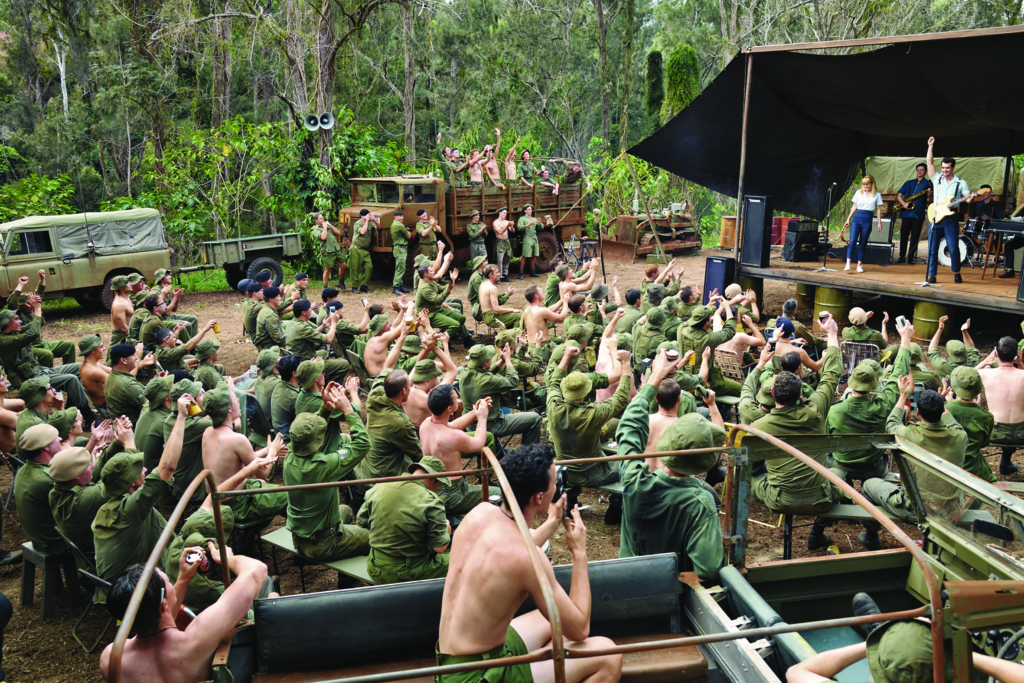
In war movies, music is a particularly important component. What does the score contribute?
I had a strong idea from the very beginning of what I didn’t want to do with the score. I didn’t want to do bombastic […] I didn’t want drums or an orchestra, and I didn’t want to have strings. It was a big movie but I didn’t want to have a big score. I decided to work with a composer who I’d just done a documentary series with: Caitlin Yeo. She’s a composer who thinks really hard about what she’s doing, and she’s really very considered. I felt I wanted a feminine presence in the score […] because I wanted to create a strange kind of schism between what was on the screen and what you’re hearing in that space. In that contrast, there was another sort of emotion coming out, which again was that sense of vulnerability, and that sense of friction and of life in the balance, or death nearby. There was something about a female voice – about a score that was emotive and ethereal as opposed to strong and strident.
What do you hope audiences will take away from Danger Close?
I’m not trying to make it specifically about Australians or Australia, but there is something about brotherhood, male loyalty and loyalty in general […] There’s a code of conduct that the film [dramatises] that, I think, is very important in this day and age to remind people of. There’s something very unique about Australian culture or Australian society that enabled these men […] There is a precedent, actually: an interpretation of orders in the Australian Army [wherein] you can disobey orders if you feel they are compromising someone’s safety. That’s kind of unique – that idea of staying true to your beliefs, being brave and following your convictions is a really important message. To me, it’s a universal message.
https://www.dangerclosemovie.com
Endnotes
| 1 | See ‘The Battle of Long Tan: How 100 Australian Soldiers Held Off 2,000 Viet Cong’, ABC News, 18 August 2016, <https://www.abc.net.au/news/2016-08-18/battle-of-long-tan-explainer-vietnam-war/7710612>, accessed 7 August 2019. |
|---|---|
| 2 | See Jennifer Macey, ‘After 42 Years Long Tan Veterans Win Recognition’, The World Today, ABC Local Radio, transcript, 14 August 2008, <https://www.abc.net.au/worldtoday/content/2008/s2335258.htm>, accessed 7 August 2019. |
| 3 | Lex McAulay, The Battle of Long Tan: ‘The Legend of Anzac Upheld’, Arrow Books, London, 1986. |
| 4 | Notably, Smith wrote the 2015 book Long Tan: The Start of a Lifelong Battle (Big Sky Publishing, Sydney), which was co-authored by Toni McRae. |
| 5 | Nott worked as cinematographer on the Spierigs’ Daybreakers (2009), Predestination (2014), Jigsaw (2017) and Winchester (2018). |
